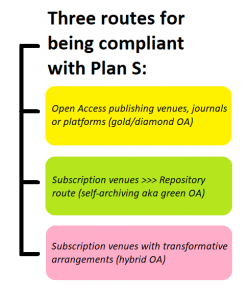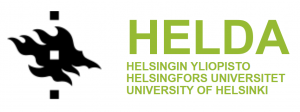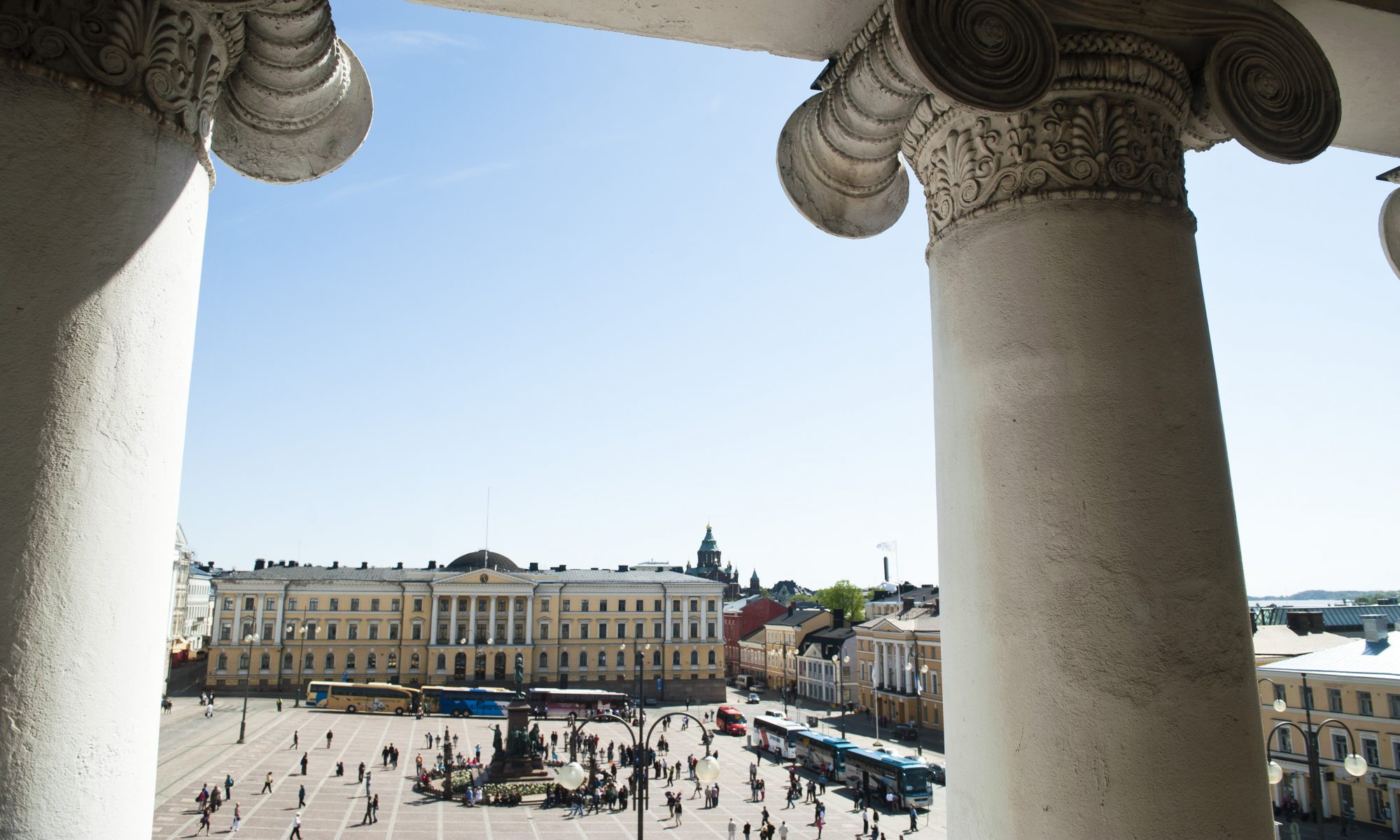The open science review 2020 includes the refinements of Plan S and the tool for checking the Plan S compatibility of publishing channels, it provides a look at the guidelines and recommendations made in national open science coordination, and it provides an overview of the effects of the coronavirus pandemic on the openness of scientific information. The special theme is open access journals that vanish from the web – and the researcher’s means of preserving her or his own research.
(Tämä artikkeli on saatavilla myös suomeksi.)
Text: Juuso Ala-Kyyny, Markku Roinila & Mika Holopainen
The year 2020 will probably be remembered as the year of the coronavirus pandemic, and the coronavirus also influenced open science in many ways. It opened up scientific knowledge – insofar as it related to COVID-19 research – and shaped the ways in which research collaboration works.
But the year was much more than a coronavirus. In this open science annual review, we aim to highlight themes that are interesting and important from a researcher’s perspective.
- The second part of the Open science annual review (in Finnish) presents open science news and research articles, e.g. the relationship of open science policies to the work of the researcher, the openness of domestic scientific journals and the academic profiles of researchers paying APC.
- The third part of the Open science annual review (in Finnish) reviews the themes of the Think Open blog, such as open education in its various forms, the basics of research data management (RDM), the views on research evaluation and elements of open science research infrastructures.
Plan S was refined, a search tool to help the researcher
Research funders’ Plan S entered into force at the turn of the year, and in the future it will also apply to all researchers applying for funding from the Academy of Finland (see the list of Plan S research funders, so called the COAlition S). The Plan S, aiming at the immediate openness of scholarly publications, was published in May 2019. The plan was refined last year with regard to hybrid model of publishing and self-archiving (green open access).
- Read also: Academy of Finland’s FAQ about Plan S and Senior Science Adviser Jyrki Hakapää’s blog article Latest developments towards open access to scientific publications.

Of the Plan S refinements, the researcher is particularly concerned about the Rights Retention Policy, which was introduced in July. Its basic idea is this: Plan S funded researchers have the right to self-archive a manuscript version of an article under a CC BY license – regardless of the journal’s or publisher’s policies. Thus, the researcher can – at least in principle – publish in any journal, including subscription journals, and still meet the Plan S conditions. This is because the author retains sufficient intellectual property rights in the agreement between the researcher and the Plan S funder, and the agreement between the researcher and the publisher is subordinate to it. Publishers have been informed of this arrangement and some publishers of subscription journals are already committed to the Rights Retention Policy. For others, time will show how they adapt to the new situation.
- Read also: What researchers are asked to do? Johan Rooryck, Executive Director of cOAlition S and a linguistics professor, explains the cOAlition S Rights Retention Strategy in his blog article.
The publication channels have their own Plan S criteria, which have been specified for the so-called hybrid journals. Hybrid journals (hybrid OA) are subscription journals that also publish open access articles. Plan S is critical of hybrid journals, and it requires them to commit to temporary and transitional ”transformative arrangements”. Under these arrangements, and by 2025 at the latest, hybrid journals must become fully open access publication channels, e.g. through APC model (gold OA) or free model (diamond OA). An up-to-date list of ”transformative journals” can be found as a Google file on the Plan S website; journals from major publishers such as Elsevier and Springer Nature are also included.
To help the researcher search for the Plan S publication channel, a beta version of the Journal Checker Tool (JCT) was released in the fall. The tool can be used to check Plan S compatibility based on the publishing channel, funder, and institution. Information on whether the publisher has accepted the Rights Retention Policy has also been integrated into the JCT.

Policies and guidelines for open science in Finland
During the 2020, a number of policies, recommendations and guidelines were completed in the national open science coordination led by the Federation of Finnish Learned Societies (TSV). Listed below are the most important documents resulting from the work:
- Declaration for Open Science and Research 2020–2025. This is a key policy paper to foster open science in Finland. It serves as a basis for determining the direction in which open science is being taken in the Finnish research community.
- Good practice in researcher evaluation – recommendation for the responsible evaluation of a researcher in Finland. The aim of the recommendation, published last spring, is to ensure that researcher evaluation and use of metrics support scientific research and the researcher.
- Open education and educational resources. Policy component 1 – Open access to educational resources. The policy component is part of a broader policy on education and educational resources. It clarifies the goal set out in the Declaration for Open Science and Research, according to which producing, developing and making use of open educational resources and teaching practices should be part of the daily life of higher education and enable continuous learning.
- Tutkimusjulkaisujen avoimen saatavuuden suositukset tutkimusorganisaatioille (Recommendations for open access to research publications for research organisations). This recommendation was completed at the end of August and includes recommendations on publishing policy, research funding and support services, among others.
- Draft: National policy on Open Access to research materials and methods – Policy component 1: Open Access to research data. Comments on the draft were requested last fall, and the comments are openly readable on Google document. Questions and comments concerning the data policy will be discussed in the Avointiede.fi article series in the spring of 2021.
- Tutkijan datapalvelut -työryhmän loppuraportti (Final report of the Researcher’s data services working group). The report presents three models for researcher data support services: a minimum model, a broader model, and an ideal model.
- Digitaalisen aineistonhallinnan käsikirja (Digital data management handbook) ja Toimintamalli digitaaliseen aineistonhallintaan (Operating model for digital data management). These two documents were created during the three-year Academic Institutes’ Open Research Data project. The project sought solutions to open up different types of and often unusual research data, such as archaeological photographs or diverse anthropological material.
- Draft: Avoimen julkaisemisen suositus tutkimusrahoittajille (Recommendation for open access publishing for research funders). Research funders play a key role in changing the publishing culture. Therefore, the elaboration of the recommendation and its progress for comment last spring was an important step forward.
- Ohje tekijänoikeuksiin liittyvästä avoimesta lisensoinnista tutkijoille ja tieteellisille kustantajille (Guide to open licensing for researchers and scientific publishers). This guide explains how to use Creative Commons licenses for open licensing of research publications and data.
- Ohje tieteellisille julkaisukanaville vastuullisen aineisto- ja datapolitiikan laatimiseksi (Guidance for scientific publishing channels for developing responsible research data policies). This guide contains a 17-point list for modifying the research data policy to meet the requirements of research funders and open science policies.
The year of pandemic highlighted the openness of science
In 2020, the spread of coronavirus (SARS-CoV-2) around the world and the illness caused by the virus (coronavirus disease, COVID-19) was the main news also from an open science perspective. In April, the Think Open blog published an article, Open science during coronavirus outbreak – an overview of the manifestations of openness, which brought together coronavirus research themes from an open science perspective.
The openness of research information became such a critical issue that most commercial scientific publishers removed the paywalls from research related to coronavirus research. During the year, researchers shared covid-19 research data with others and collaborated widely (see e.g. the report How COVID-19 is Changing Research Culture). As a result of the intensified collaboration, the pre-print publishing culture, in which research results are distributed for the research community before the actual peer review, became more widely known. Accelerated scientific communication – and the high demand for coronavirus research – also had its downsides when incomplete or erroneous research had to be withdrawn.
”[T]he changes that have been going on in scholarly communication are being accelerated in areas around COVID-19 research. Open Access models, rapid peer review, preprints and next generation search technologies are all playing a role in accentuated ways as a part of this extreme situation. COVID-19 is, in some sense, a natural experiment: A microcosm that allows us to see the future of scholarly communication.”
– How COVID-19 is Changing Research Culture (2020)
The year of the pandemic with its lockdowns and restrictions also raised the question of the information behind the decision-making. In May, Open Knowledge Finland (OKF) submitted a Freedom of Information request to the Finnish Institute for Health and Welfare (THL) on the source codes for epidemic calculations. However, it was denied, arguing that openness is ”detrimental to the proper evaluation of research results”. According to OKF, THL’s decision was contrary to the government’s own resolution on the openness of information. The FOI process continued in December, when the OKF sent a more detailed request on the source code of the latest epidemic calculations.
Scientific information vanishes – self-archiving preserves it
The vanished scientific journals made headlines in the autumn in several media, from Nature and Science to Tekniikan Maailma ja Kaleva. In their study Open is not forever: a study of vanished open access journals, researchers Mikael Laakso, Lisa Matthias and Najko Jahn identified 176 open access journals that had disappeared from the web between 2000–2019. In addition, there was nearly inactive 900 journals with a high risk of vanishing. Even in the curated DOAJ database, only a third of OA journals have taken care of the preservation – for example, by utilizing international services (Portico, LOCKSS, CLOCKSS, PKP PN).

The study dealt with OA journals, but the problem of vanishing journals concerns more broadly the research published in the web, including subscription journals. However, there is one simple way within the researcher’s reach to ensure the preservation of her or his own research: self-archiving, also known as green open access. The importance of self-archiving from preservation’s point of view was also highlighted in the blog article Why is it important to self-archive OA publications also? – and later, the role of the green open access from the perspective of disseminating research was also discussed: Visibility of publications on the web is enhanced by harvesting of repositories. Experts from the University of Oulu Library also addressed the same issues in their response in the newspaper Kaleva:
”Open publishing of research publications is, in fact, the best possible way to guarantee the availability and long-term preservation of research – as long as the author only remembers to self-archive her or his publications in an open digital publication archive. According to the Program of Responsible Research of the University of Oulu, the university requires the self-archiving of publications in the university’s open Jultika repository. A responsible researcher makes sure that her or his article is self-archived in the institutional repository, but the articles may also be stored in international repositories. In doing so, the researcher is also taking care of the distribution of her or his articles through the search engines and services that harvest these open repositories.”
At the University of Helsinki, self-archiving is guided by the Principles of Open Publishing: ”All scientific publications produced at the University are self-archived into the University’s publication archive HELDA.”
